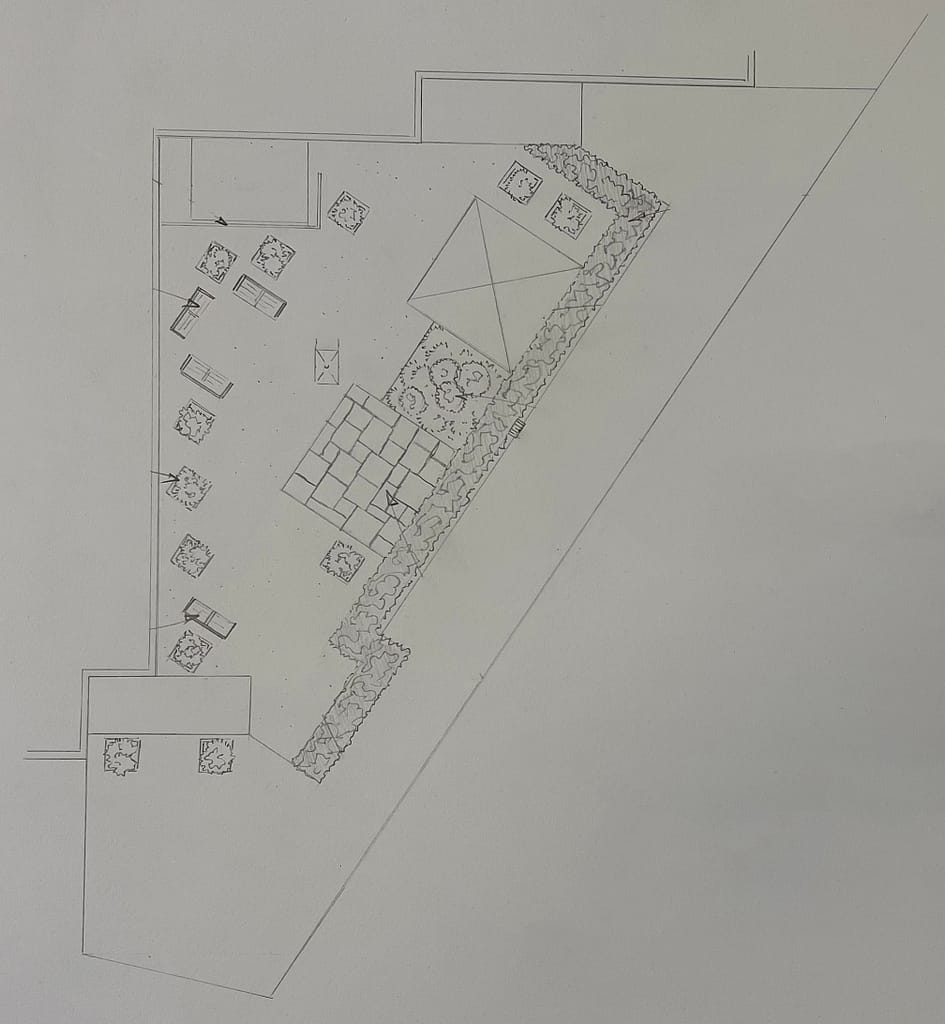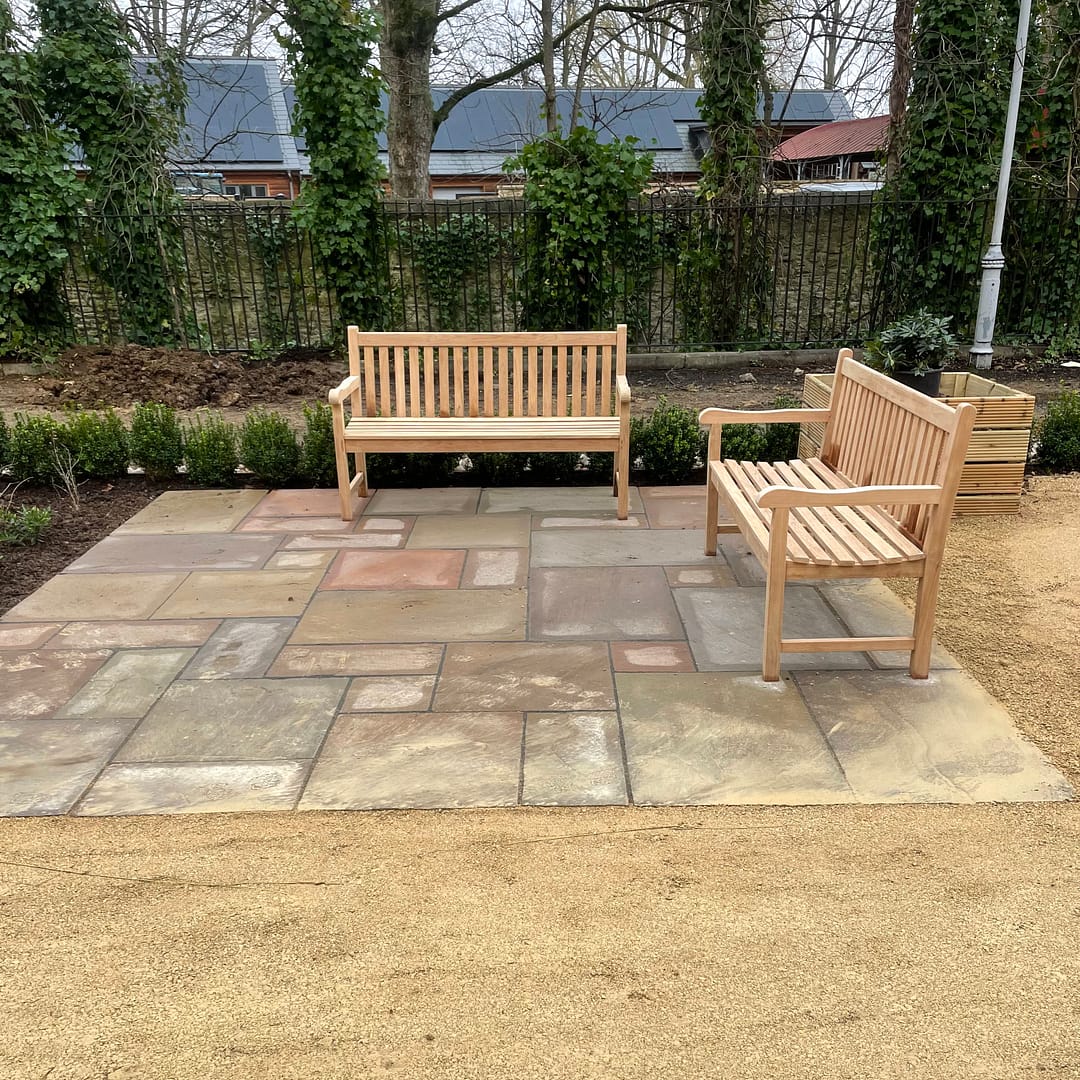At this year’s RHS Chelsea Flower Show, one of largest show gardens on main avenue has been created by leading homelessness charity St Mungo’s and design studio Cityscapes to embody the partnership between the two organisations as they work together to help people recovering from homelessness develop their confidence, learn new skills and rebuild their lives.
Putting Down Roots celebrates St Mungo’s recovery and skills project and we were privileged to make our own contribution to that cause when we were recently invited to create a garden for one of the centres that St Mungo’s is involved with, run by Oxford City Council.
Close to the city centre of Oxford lies an outreach hub which is central to the council’s plans to transform services that help people at risk of and experiencing homelessness across Oxfordshire. This project is one of the first points of contact that can help with conversion of sleeping rough on the streets into the warm. It provides dedicated services and a multi-agency team that can help people off the streets into a safe, warm space to stay.
The building is currently having a wing transformed into accommodation that overlooks a disused car park, and it’s this area that was presented to us as a blank canvas, with the aim of transforming it into a hidden green haven.
The Brief
To create a city centre sanctuary for those less fortunate, who are struggling with homelessness across Oxfordshire. The disused car park sits behind the hub and our brief was to create a relaxing outdoor space for staff, residents and visitors to access, enjoy, and begin the process of rebuilding lives.

Garden Design
A calm and relaxing garden space including generous, covered seating areas on a flagstone terrace with naturally matched pointing, adjacent to the building.
Its location off a busy street in the centre of Oxford meant that our team of landscapers and gardeners had to plan for and be vigilant to obstructing the road and any rights of access. Access to the rear of the building was extremely tight for machinery and material deliveries, but the temporary removal of electric gates, a crane and some very steady hands won the day.
The design of this tranquil oasis was to include a number of separate seating areas where informal meetings, events and interactive workshops could be held, as well as providing somewhere to simply sit closer to nature and let the mind wander for a while in peace.


One larger area was paved to form a flagstone terrace, over which a hand-constructed, bespoke pergola was raised by our artisan carpenter and fitted with a roof for shade and shelter. Smaller seating areas featured benches fitted into the flagstone floor.
To the far side of the space, nearest the building, we constructed ‘hit-and-miss’ screening to hide the air conditioning units, whilst still allowing easy access for servicing.
Planting Scheme
The planting was designed to give year-round interest, delighting both the visual and olfactory senses, whilst being easy to maintain.
Adjacent to the main seating area a low row of bushy Buxus formed a hedge that will mature to give a border to the terrace. Inside the main courtyard area, shrubs were planted in groups, for impact, interspersed with ‘showstopper’ plants, repeated throughout the whole. Large handcrafted timber planters held a handpicked mix of shrubs and showstoppers to compliment the main planting areas.

Plants were chosen to give form and structure throughout the year, as well as to create a long-flowering season, giving both colours and, importantly, scent from late-winter throughout to autumn.
Beginning with Sarcococca humilis in late-winter, this hardy evergreen bears clusters of thread-like creamy flowers that emit an unexpected, heady perfume through to early-spring. These give way to evergreens, Choisya ternata ‘Sundance’ and Photinia ‘Red Robin’, as we move through the spring, Photinia sporting white flowers against scarlet leaves, which mature to dark green in the winter, whilst dome-shaped Choisya contrasts with glossy, yellow-green foliage bearing fragrant white flowers in late spring.
Hebe ‘Wiri Cloud’ takes up the mantle with pale green leaves and light pink flowers from early summer. Handing over the baton to Physocarpus opulifolius ‘Diablo’ as May turns to June, its pink-tinged white flowers sit against its burgundy leaves.

From July to September Hydrangea ‘Annabelle’ takes centre stage with huge, creamy-white powder-puffs of flower heads that fade to pale lime over time.
Caryopteris ‘Kew Blue’ provides gentle grey-green foliage and is adorned by small blue flowers from late-summer to autumn. Stroking the leaves between your fingers releases a lightly spiced, aromatic fragrance.
Spirea ‘Goldflame’ is a fabulous foliage plant that appears copper-orange in spring, turning through yellow-green over the summer, then mellowing to a soft flicker of flame-like shades in autumn.
Dotted around the area were 12 handmade timber planters, lined and filled with nutrient-rich matter. These were planted with a mix of selected evergreen shrubs as well as the odd scene-stealing Hydrangea ‘Annabelle’, reflecting back the main planting scheme.
Pittosporum tobira is a compact shrub with white, honey-scented flowers in spring/summer against waxy green foliage, perfectly suited to a sheltered courtyard setting. Set in the raised planters alongside fantastically jasmine-fragranced Osmanthus burwoodii, they’re at the perfect height to brush past, scenting the air or sit ensconced by, enveloped by a cloud of natural perfume.
With the brief in hand and ideas ready on paper, we were able to completely transform the disused space and turn it into a tranquil paradise for all to enjoy and build their new life around.
No matter what ideas you have for your garden, each of them is our own personal paradise in which we can disappear and escape reality. Talk to us about your thoughts about your garden, and we’ll help to shape them into existence.
Discover more about the project and tune into our Instagram to keep an eye on progress…


